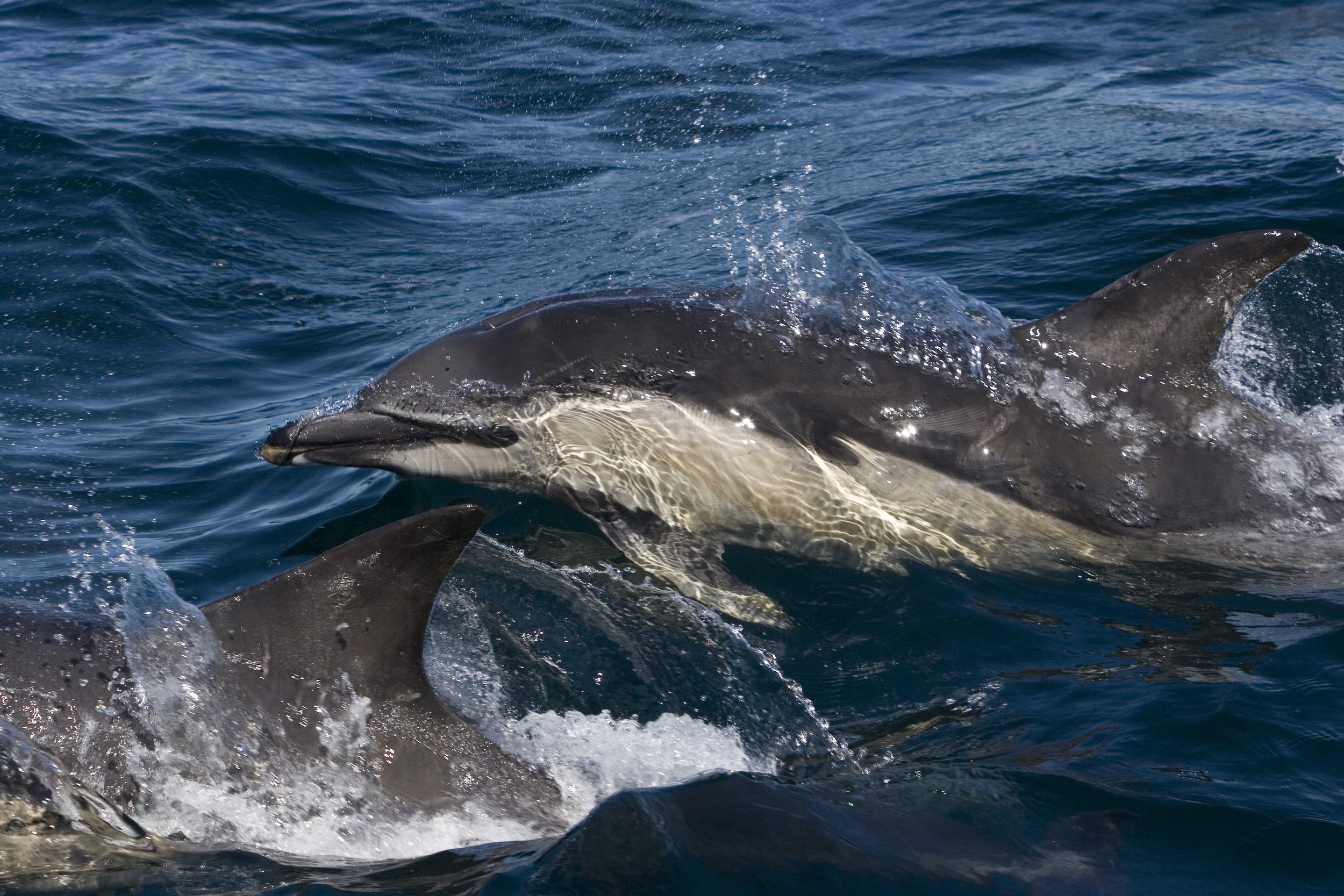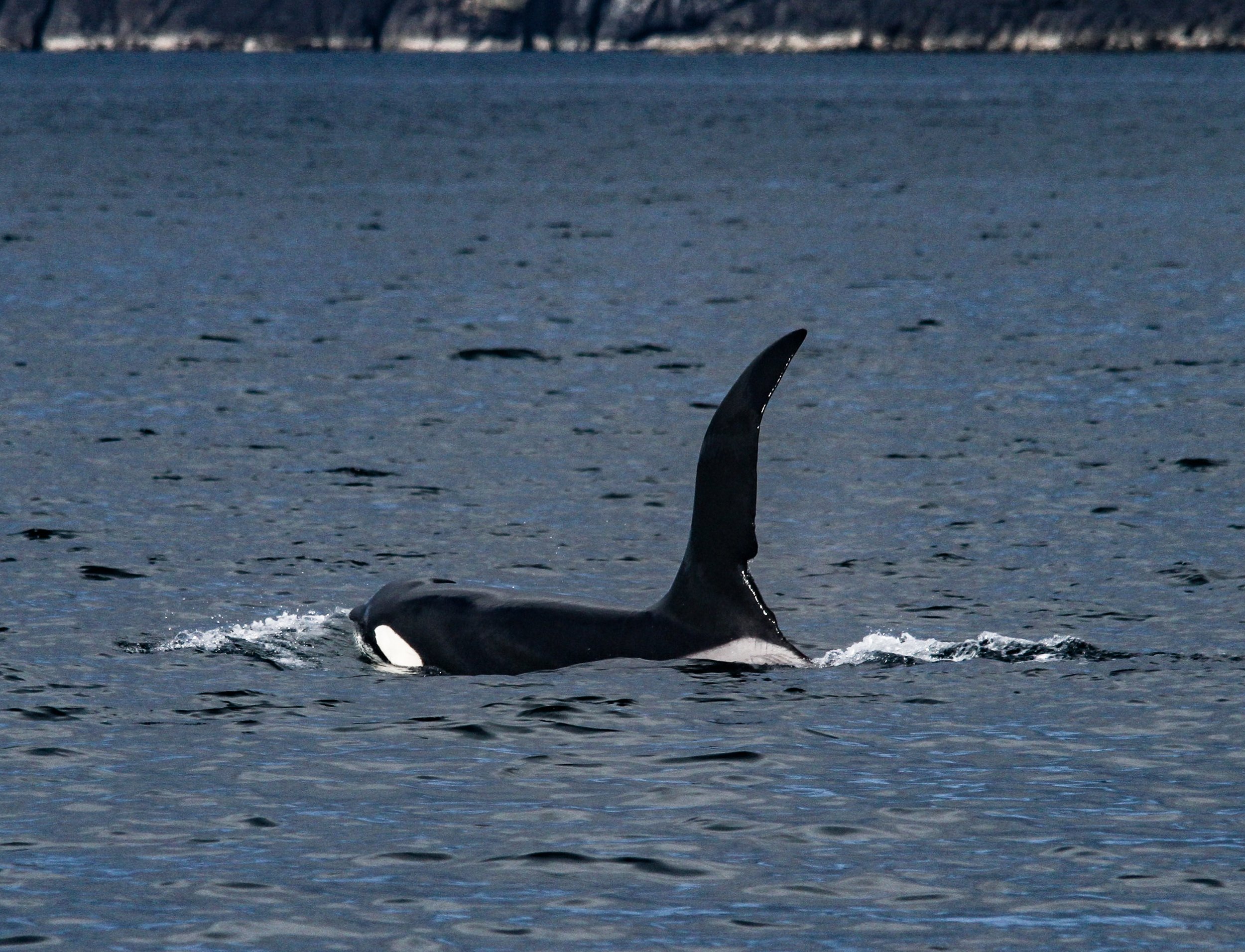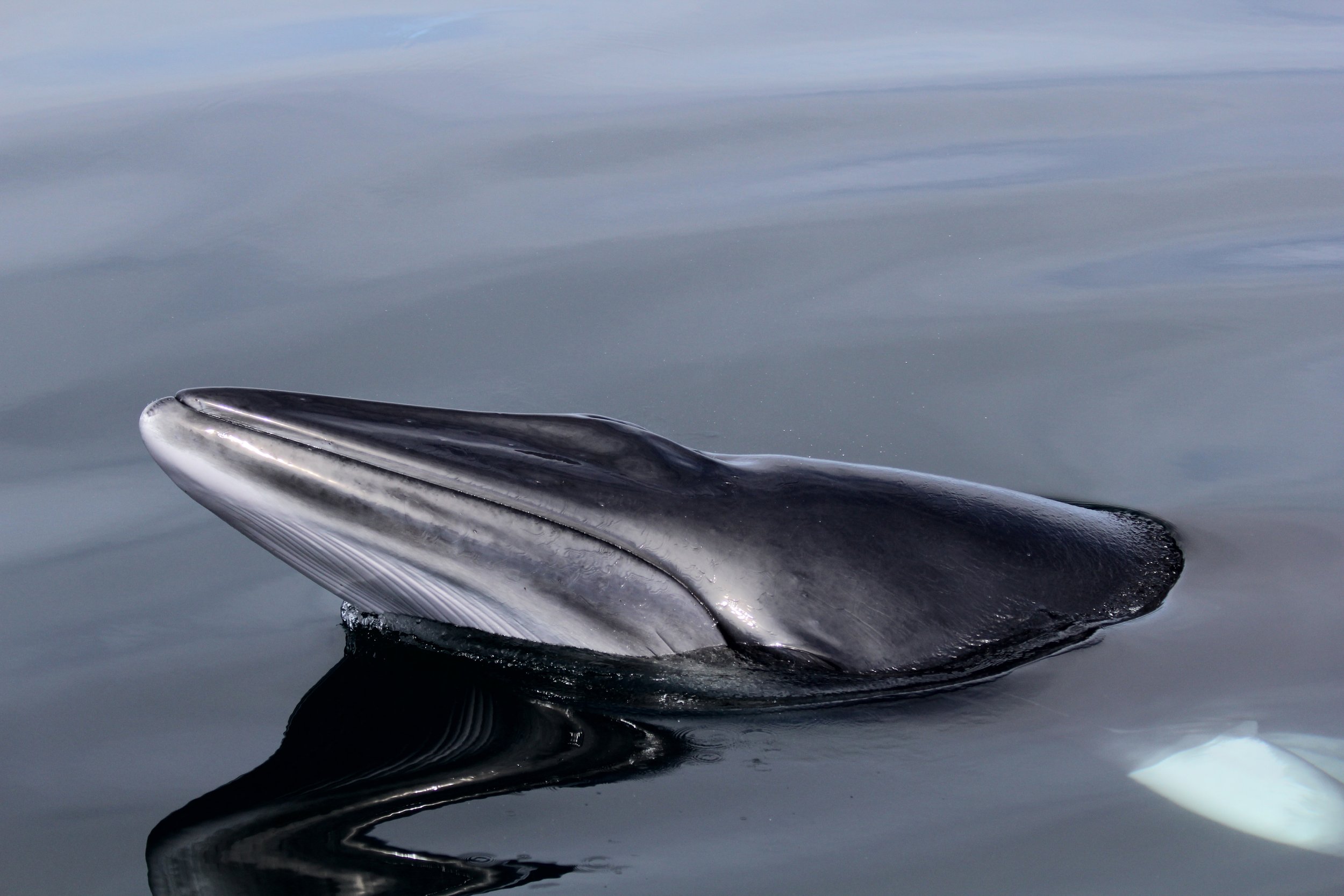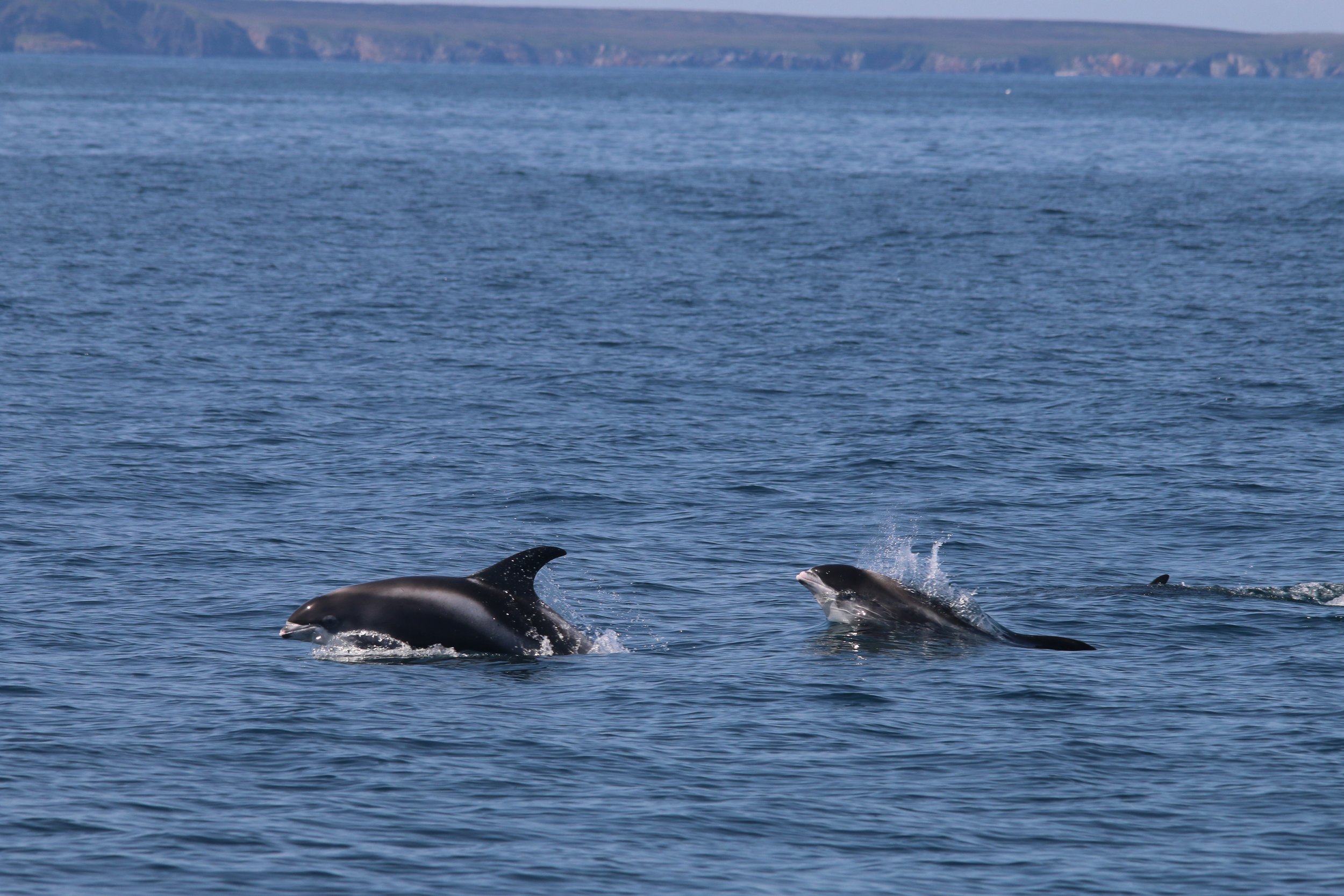Seen a fin? send it in! – Scottish charity urges public to report whale and dolphin sightings in Hebrides
Common dolphin spotted in Scottish seas ©HWDT
The Hebridean Whale and Dolphin Trust (HWDT) are calling on members of the public to get involved with efforts to protect Scottish whales and dolphins by reporting what they’ve spotted and carrying out surveys from both land and sea.
The appeal comes as the conservation charity launches its new and improved Whale Track community sightings app and website.
Thanks to support from the NatureScot Nature Restoration Fund, Whale Track now boasts a land-based survey option and brand-new photo portal. The new features enable people to conduct effort-based whale watches from land and easily submit images for photo-identification research.
Every sighting and photograph submitted make a difference to the Trust’s research, deepening the understanding of the marine animals seen in Scottish waters.
The west coast of Scotland is one of the most important areas in Europe for whales, dolphins and porpoises – collectively known as cetaceans – with over a quarter of the global species recorded in Hebridean waters. However, we still have much to learn, and this is where people reporting sightings can have a significant impact.
“It’s very exciting to see the addition of land-based surveys to Whale Track. Effort based data is crucial in deepening our understanding of the cetaceans which inhabit Hebridean seas. Knowing not only when and where people are seeing these animals, but also where they are not, enables us to better understand where the important areas for these animals are, allowing us to better protect them,” said Sadie Gorvett, the Hebridean Whale and Dolphin Trust’s Education Officer.
Watching out for whales from Ardnamurchan Lighthouse, Lochaber
Any time you are near the sea in Scotland you have a chance of spotting a marine mammal. People can conduct land-based surveys from a fixed point, reporting on things such as location, environmental conditions and what marine animals they see. However, the Trust reminds people that even if they do not spot any marine animals, it is still important to submit their survey.
The addition of the land-based surveys compliments the existing excursion mode, which enables anyone travelling at sea to record their journey while plotting their whale and dolphin sightings.
The Trust is also encouraging the public to submit their photos alongside sighting reports. Volunteers can now add up to three photos via the free app, as well as the option to upload up 100 photos through the new Whale Track Photo Portal, which will help to confirm species recorded and, in some cases, identify individual animals.
“Photo-identification is a non-invasive monitoring tool, which allows scientists to identify individual animals in a population, through tracking their movements, determining their age and even recording births and deaths,” explains Sadie.
“Approximately 70% of HWDT’s photo-identification catalogues are images submitted by the Whale Track community. This technique has helped us learn so much more about different populations, such as the West Coast Community killer whales. It is an amazing way for everyone to get involved in tracking their movements, for example, just the other week, through photos sent in from members of the public, we learnt that John Coe, who is somewhat of a killer whale celebrity, was once again seen visiting Ireland.”
Submitting photos alongside sighting reports helps the Trust to track the movements of resident species, such as bottlenose dolphins, alongside adding to its knowledge of rarer visitors, such as humpback whales and killer whales.
Spring is an exciting time, as migratory species, such as minke whale and basking shark, make a welcome return. The charity is eager for even more people to get involved by downloading the new and improved Whale Track app and reporting their sightings when they are out and about, either on land or at sea.
Francesca Osowska, Chief Executive of NatureScot, said: “Whale Track is a great way for people to get involved in helping to protect some of Scotland’s best-loved species. This new technology will increase our understanding of the marine species in our coastal waters and we’re delighted to be able to support it through the Scottish Government’s £65m Nature Restoration Fund. Whether it’s at sea or on land, getting out and about to document wildlife sightings brings people closer to nature and helps individuals and communities value nature around them.”
The Trust is hosting a free online training session on Thursday 21st April at 7pm, for new and existing volunteers to find out more about the new features of the app and how to conduct surveys. To find out more about this opportunity visit https://hwdt.org/hwdt-events.
The upgrades to HWDT’s Whale Track app were funded by a grant of £49,274 from the NatureScot Nature Restoration Fund.
Ends






